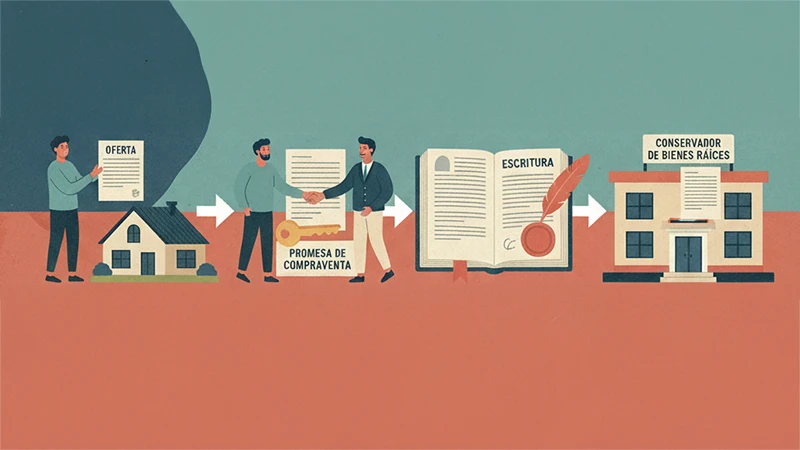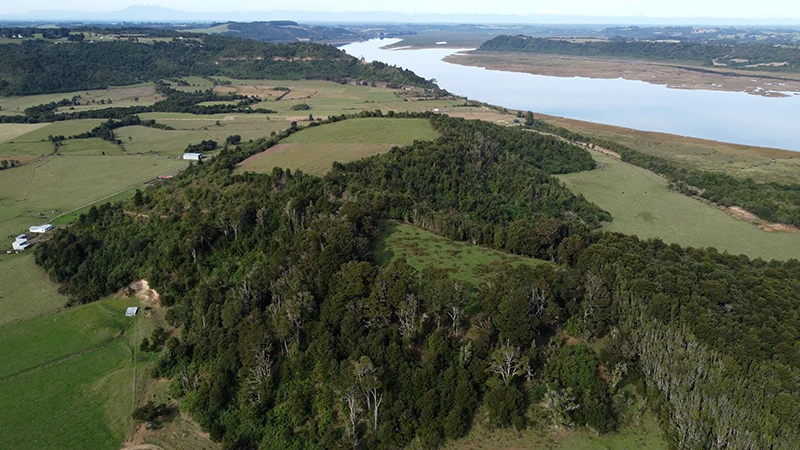In Chile, otters, specifically the Chilean river otter or “huillín” (Lontra provocax), are in a vulnerable situation due to various factors. Fortunately, several strategies have been implemented for their conservation and protection, which are vital to ensure the survival of this emblematic species. This article details the main actions and challenges in the protection of otters in Chile.
Species of Otters in Chile and their Habitat by Region
Huillin (Lontra provocax)
The huillín, also known as the Chilean river otter, is a species endemic to Chile and Argentina. In Chile, it is found mainly in the southern and austral zone, inhabiting rivers, lakes and estuaries in the regions of Los Ríos, Los Lagos, Aysén and Magallanes. This semi-aquatic mammal depends on healthy aquatic ecosystems and densely vegetated riparian areas for shelter, feeding and reproduction.
Chungungo (Lontra felina)
The chungungo, or sea otter, is another species of otter present in Chile, inhabiting the Pacific coast from the north to the south of the country. This mammal prefers rocky coastal areas and areas of seaweed where it can find its food, which includes fish, crustaceans and mollusks. The regions of Coquimbo, Valparaíso, Los Ríos and Los Lagos are some of the areas where the chungungo can be found.
Conservation Strategies
Habitat Protection
Otter conservation begins with the protection of their natural habitats. In Chile, this is done through the creation and management of reserves and national parks. Some national parks that are responsible for the survival of otters are:
- Puyehue National Park: Located in the Los Lagos region, this park protects diverse aquatic and riparian ecosystems crucial for the huillín.
- Chiloé National Park: Also in the Los Lagos region, this park is vital for the conservation of the chungungo, due to its extensive coastal and marine areas.
- Queulat National Park: In the Aysén region, this park includes rivers and lakes that are important habitats for otters.
- Lake Jeinimeni National Reserve: In the Aysén region, this reserve protects lakes and rivers essential to the huillín.
Research and Monitoring
Scientific research is essential to better understand otter ecology and behavior. Detailed studies allow us to identify the most critical areas for otter conservation and to monitor existing populations. Ongoing monitoring programs help to assess the conservation status of otters and detect potential threats in a timely manner.
Education and Public Awareness
Education and public awareness are powerful tools in otter conservation. Non-governmental organizations (NGOs) and government agencies conduct educational campaigns to raise awareness of the importance of protecting otters and their habitats. These campaigns include activities in schools and local communities to encourage greater commitment to conservation.
Legislation and Protection Policies
In Chile, there are conservation laws that protect endangered species, including the river otter. These laws prohibit the hunting and capture of otters and establish penalties for those who violate them. The National Conservation Plan for the Huillín, developed by the Chilean government, establishes guidelines and specific actions for the protection and recovery of huillín populations in the country.
Threat Control
Otters are very sensitive to water pollution, so part of their protection involves controlling and reducing pollution in rivers and lakes. This includes regulating industrial waste and promoting sustainable agricultural practices. In addition, the management of invasive species is crucial, as some may compete with otters for resources or alter their habitats.
Desafíos Persistentes
Habitat Destruction and Fragmentation
- Deforestation: Logging of riparian forests and land conversion for agriculture and urban development destroy the huillins’ natural habitats.
- Infrastructure Construction: Projects such as roads, dams and housing disrupt the natural corridors that huillins use to move and forage.
Water Pollution
- Industrial and Agricultural Wastes: Pollution from pesticides, fertilizers and industrial wastes deteriorates water quality, affecting health and the availability of prey for huillins.
- Domestic Pollution: Inadequately treated sewage discharged into rivers also poses a significant risk to their habitat.
Climate Change
- Alterations in Aquatic Ecosystems: Climate change may alter water availability and temperatures, affecting both huillins and their prey.
- Extreme Weather Events: Floods and droughts can destroy habitats and reduce areas available for feeding and breeding.
River Diversion
- Habitat Alteration: Hydroelectric and irrigation projects that divert the natural flow of rivers can destroy essential riparian habitats for huillins. These animals depend on healthy rivers and estuaries for feeding, breeding, and shelter. Reduced river flows reduce the availability of prey such as fish and crustaceans, directly affecting the huillin’s diet.
- Habitat Fragmentation: River diversion can fragment riverine habitats, isolating huillin populations and hindering their mobility and dispersal. This can lead to reduced genetic diversity and inbreeding problems.
- Changes in Water Quality: Alterations in river flow can affect water quality, increasing sediment and contaminant levels that harm both huillins and their prey.
Hunting and Trapping
- Poaching: Although prohibited, illegal hunting of huillins for their fur remains a threat in some areas.
- Traps for Other Species: Huillins often accidentally get caught in traps set for other animals, resulting in injury or death.
Competition and Predation by Introduced Species
- Invasive Species: Animals such as American mink compete with huillins for food and territories, as well as being direct predators of huillin young.
Shortage of Dams
- Aquatic Ecosystem Degradation: Declining populations of fish and other aquatic organisms due to overfishing and habitat degradation affect food availability for huillins.
Tourism and Recreational Development
- Human Disturbance: Uncontrolled tourism in sensitive areas can cause disturbance to huillin habitats, affecting their behavior and reproductive capacity.
Dogs
- Direct predation: Dogs may hunt and kill huillins, especially hatchlings and young individuals that are more vulnerable. This predatory behavior is a direct threat to huillin populations.
- Competition and Disturbance: Dogs may compete with huillins for food and territorial resources. In addition, the presence of dogs in areas inhabited by huillins can cause stress and alter their natural behavior. Unleashed dogs may disturb huillin resting and breeding sites, affecting their ability to survive and reproduce.
- Disease Transmission: Dogs can transmit infectious diseases to huillins, which can have devastating effects on local populations. Common diseases that can affect huillins include parvovirus, distemper and rabies.
Natural and Anthropogenic Disasters
- Oil Spills and Pollutants: Oil spills and other industrial pollutants can cause serious and immediate damage to river and coastal ecosystems where huillins live.
Conservation Organizations and Foundations
Governmental Organizations
Ministry of the Environment (MMA) This ministry leads conservation policies in Chile, including specific plans for endangered species such as the huillín. The MMA develops and executes conservation and habitat recovery plans.
Servicio Agricola y Ganadero (SAG) SAG oversees wildlife protection, enforcing regulations and controlling activities that may negatively affect otters.
Foundations and NGOs
CODEFF (Comité Nacional Pro Defensa de la Fauna y Flora) CODEFF is one of the oldest organizations in Chile dedicated to biodiversity conservation. It works to protect critical habitats for endangered species such as the huillín.
WWWF Chile The WWF organization has specific conservation programs in Chile that include the protection of aquatic ecosystems and emblematic species such as the huillín.
MERI Foundation This foundation is dedicated to biodiversity research and conservation in Chile. Its projects include the
protection of endangered species and environmental education.
Fundación Biodiversa Fundación Biodiversa works in the conservation of ecosystems and native species in Chile, conducting research and projects to protect the huillín.
Conservation Projects and Programs
National Huillin Conservation Plan Developed by the Ministry of Environment, this plan establishes specific strategies and actions for the protection and recovery of the huillin in Chile.
Red de Observadores de Aves y Vida Silvestre de Chile (ROC) Although focused on birds, ROC also participates in the conservation of other aquatic mammals such as otters, through monitoring and scientific studies.
Universities and Research Centers
Institute of Ecology and Biodiversity (IEB) The IEB conducts research on ecology and conservation, including studies on the distribution and status of huillín populations.
In summary, otter protection in Chile is a multifaceted effort involving habitat protection, research, education, legislation and threat control. Despite persistent challenges, the joint work of government agencies, foundations, NGOs and the community is vital to ensure the survival of this emblematic species. The continuity and strengthening of these initiatives are essential to maintain and improve aquatic ecosystems and guarantee a sustainable future for otters in Chile. The conservation of huillines requires addressing these threats in a comprehensive manner. It is crucial to implement river protection and management measures to maintain natural flows and water quality. In addition, it is important to control the presence of dogs in natural areas through community education and enforcement of responsible pet ownership regulations. Collaboration between governments, environmental organizations and local communities is essential to ensure the survival of huillins in their natural habitat.


